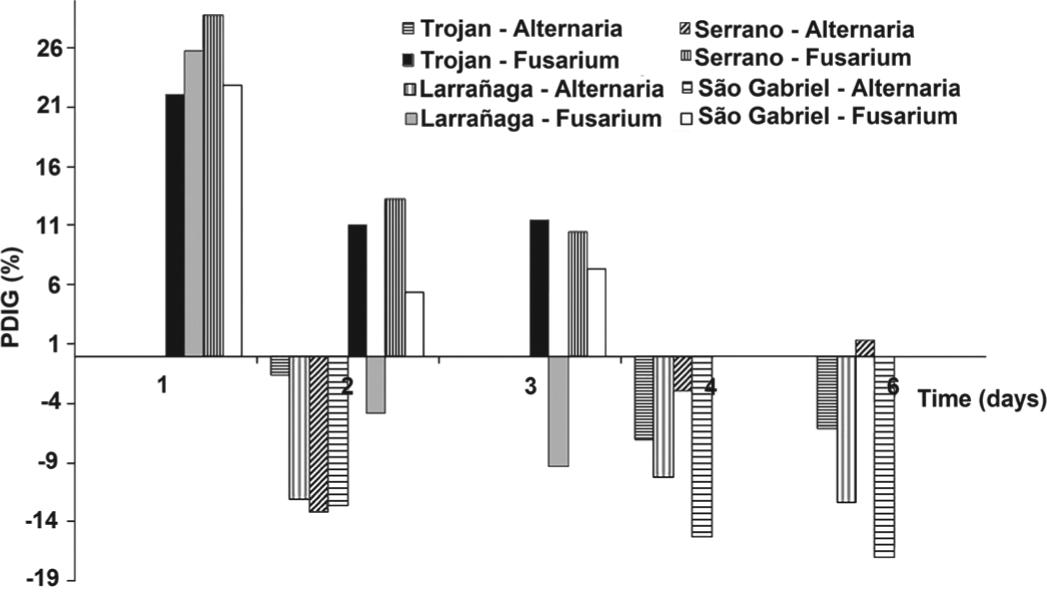O perfil fitoquímico e a atividade antimicrobiana de extratos de cultivares (cvs.) de Lotus uliginosus (cvs. Trojan e Serrano), L. tenuis (cv. Larrañaga) e L. corniculatus (cv. São Gabriel) foram investigados. A análise fitoquímica revelou taninos, cumarinas e flavonoides em todos os extratos, com variação entre os cvs., demonstrando variabilidades genotípicas. Pelo método de Cromatografia Líquida de Alta Eficiência, os cvs. Larrañaga e São Gabriel apresentaram os maiores percentuais de catequina e epicatequina, respectivamente, e apresentaram rutina, que não foi detectada nos demais. Tais genótipos apresentaram atividade antifúngica, mas não mostraram atividade antibacteriana. O cv. Larrañaga inibiu o crescimento micelial de Alternaria sp. e Fusarium graminearum enquanto o cv. São Gabriel foi ativo somente contra Alternaria sp.. Os cultivares que apresentaram as maiores quantidades de metabólitos secundários, demonstraram atividade significativa contra fungos filamentosos. Os resultados fornecem indicativos para futuras pesquisas sobre a utilização farmacológica de Lotus spp.
Alternaria ; flavonoides; Fusarium ; taninos


